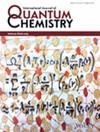Density Functional Study on the Structures and Adsorption Properties of PtAgn (n = 1–16) Clusters
Abstract
The structures and properties of PtAgn (n = 1–16) clusters have been studied by density functional theory (DFT). The Tpssh/def2-TZVP method is chosen in this work. Calculations reveal that the structures of PtAgn (n = 1–16) clusters are planar structures when n = 1–3, while they present three-dimensional structures when n = 4–16. The coordination number of the Pt atom in PtAgn (n = 1–16) clusters are in the range of 1–11. Pt atoms in PtAgn (n = 1–16) clusters prefer to locate in the centers of the structures. The electronic structures are compared with available experimental and theoretical data. The stability analysis manifests that the clusters have odd-even stability properties. The study of catalytic properties on PtAgn (n = 1–16) clusters perform similar interactions with one CO molecule. The Pt atom favors interacting with the carbon terminal of the CO molecule. According to the thermodynamic property study, the adsorption reactions of PtAgn (n = 1–16) and CO are all spontaneous. The stability of PtAgnCO (n = 1–16) clusters present odd-even properties. The projected density of states (PDOS) study reveals that the orbital hybridization phenomenon is present between the Pt and C atoms in the PtAg6CO cluster.


 求助内容:
求助内容: 应助结果提醒方式:
应助结果提醒方式:


